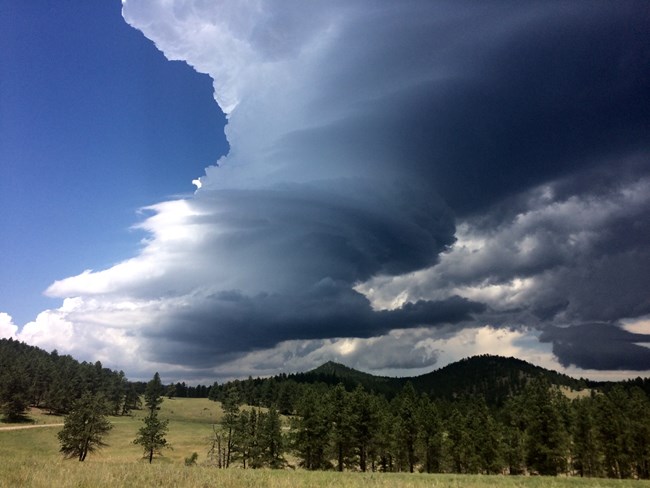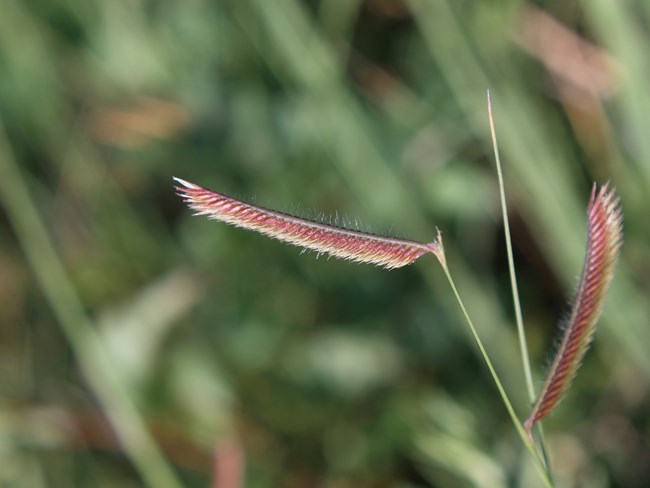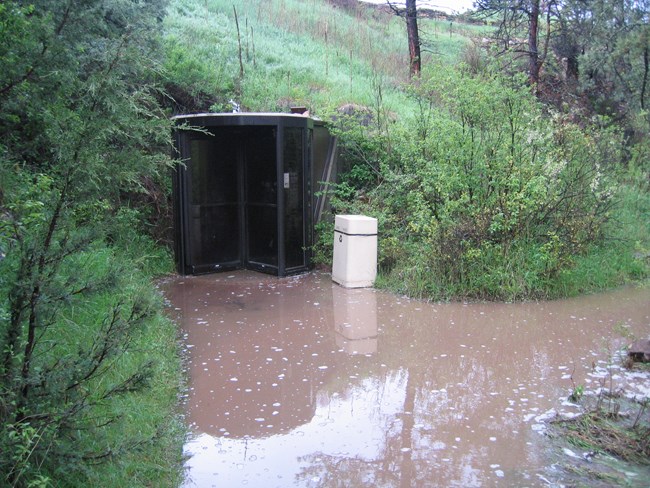The Science Is InRecent reports by the U.S. Global Change Research Program, the National Academy of Sciences, and the United Nations Intergovernmental Panel on Climate Change, give a clear indication of a warming world and related changes in our global climate system. The climate is changing, and there is little scientific doubt that most of the temperature increases since the mid-20th century are due to greenhouse gases produced by human activities. Taking action now will diminish the risks associated with climate change, and reduce the likelihood of catastrophic and far more expensive consequences. A Changing ClimateChange has always been a powerful force of nature. National parks help us understand how much change influences our lives by illustrating how interconnected we are with our environment. In the last 100 years, the Earth's surface temperatures have risen an average 1.33°F (0.74°C). More than 20% of this change has occurred since 1996, with the last 10 years ranking as the warmest decade on record. Current warming is occurring in most regions across the globe and is largest at high latitudes in the Northern Hemisphere. James Hansen, NASA's chief climate scientist has said "We are getting close to a tipping point...Several degrees of temperature rise are unavoidable. The changes will be substantial, but something to which we can probably adapt. However, if we stay on a business as usual path for another decade, the impacts will be dire." 
NPS photo Temperature and PrecipitationThe portion of the planet we call home is warming up. While the average annual temperature in the continental U.S. has increased by about 1°F over the past century, temperature changes on the central and northern Great Plains have been more dramatic. The average annual temperature in these portions of the Great Plains has risen by at least 2°F, but in some locations, such as the Dakotas and portions of Montana, there have been temperature increases approaching 5.5°F. In other words, the northern and central portions of the Great Plains seem to be heating up faster than the southern portion, and more so than most of the U.S. Over the same time period, precipitation patterns have changed. Precipitation is down by as much as 10% in the eastern portions of Montana, Wyoming, and Colorado; northwestern Kansas; most of North Dakota and central Nebraska; and the Black Hills of South Dakota. Precipitation has increased east of the Black Hills, towards central and southeastern South Dakota, and in central Oklahoma and Texas. Climate models project temperatures in the Great Plains will continue to rise by 5° to 10°F (3° to 6°C) by the end of the 21st century, with winters and springs becoming notably warmer. Most models predict an increase in precipitation for the northern and southeastern Great Plains, but there is less certainty when it comes to the central and southwestern Great Plains. Precipitation may rise in some areas of the Great Plains, but due to higher ambient temperatures, more evapotranspiration is expected to lead to soil moisture deficits and drought conditions. Here again, the models disagree as to the degree and extent of the impact. Nevertheless, the models agree that higher precipitation and higher temperatures in the southeastern Great Plains will cause the heat indexes to soar in this area. The timing and character of precipitation may also be altered. Given the additional energy in the atmosphere, summer precipitation is likely to come in the form of downpours from more frequent and intense thunderstorms, which in turn enhances the chances of increased runoff, flooding, and erosion. During the winter, precipitation is more likely to come in the form of rainfall, thereby diminishing annual snow packs, and changing stream flow patterns in drainage systems. 
NPS photo The Ecological EffectsFor natural areas in the Great Plains, the changing climate will affect plant community composition, plant water use, and soil organic matter. The slight warming of nighttime temperatures seen in the last 20 years, for example, has been linked to the decline of blue grama grass, the dominant grass of short-grass prairies. Evapotranspiration will be driven by higher temperatures, and grasslands in the Great Plains are expected to exhibit a 50% increase in water use. Climate models also forecast declining levels of organic matter in the soil across much of the Great Plains due to the accelerating effects of higher temperatures on decomposition rates. In turn, the moisture holding capacity of the soil and its fertility would be diminished with the loss of organic matter. Other concerns for the Great Plains include the loss of prairie potholes in the north, due to more frequent droughts, and a possible decline in the quality of aquatic habitats, due to warming waters and variations in the quantity or timing of water recharge. This will have serious impacts on fish and bird populations and the numerous other creatures that depend on these aquatic habitats. Warming temperatures increase problems related to insects and disease. A longer growing season may mean that more generations of pests can attack vegetation, while shorter and warmer winters will allow more pests to survive. If vegetation has been stressed by drought or fire, it is also more susceptible to disease and infestation. The coordination in timing between life cycles of predators and prey may be the greatest impact on wildlife species attributable to climate change. Changes in climate are having significant effects on breeding range, winter distribution, and the timing of migration for many bird species in North America. Changes in the nutritional value of plants or changes in the timing of insect emergence could contribute to a decline in some bird populations. 
NPS photo Recreaction, Health, and SafetyClimate change will create longer seasons for popular warm weather activities like swimming, camping, boating, and hiking. The season for winter recreational activities, however, will get progressively shorter as snow pack decreases. Loss of wetlands and increasing water temperatures will lead to changes in fish communities that may impact the recreational fishing experience in rivers and lakes. Researchers predict an increase in intense short-duration rain storms characterized by violent winds, lightning, and/or flash floods creating hazardous conditions for visitors to National Park Service areas. These storms may also pose threats to historic structures, campgrounds, roads and trails, archeological sites, administrative facilities, and other park resources and infrastructure. As spring arrives earlier, mosquitoes and other insects will begin hatching earlier in the season and may take longer to die off as winters become shorter. This will be a nuisance to visitors and may increase the risk of mosquito transmitted viruses to visitors. Increased summer temperatures may lead to more heat related illnesses. Rising temperatures, greater evaporation leading to reduced soil moisture and earlier springs are likely to increase forest and grassland fire hazards, increase the fire season and create larger fires. Climate and ecological models suggest that the seasonal severity of fire is likely to increase by 10% over much of the U.S. This could in turn increase atmospheric carbon contributions from forests. The fire hazard could actually decrease, however, in the Northern Great Plains due to increases in precipitation amount and frequency. What Difference Can We Make?
For more information go to: |
Last updated: September 3, 2023
